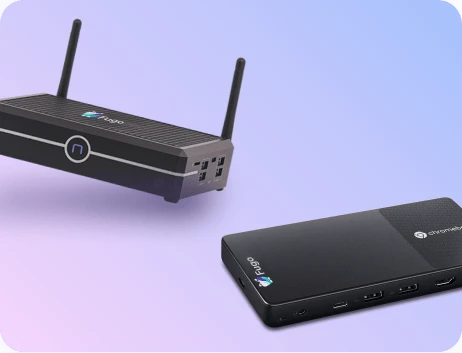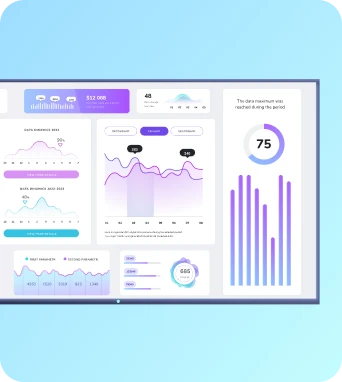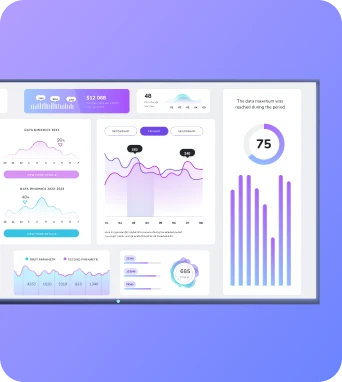There have been a lot of Amazon Fire Sticks released since 2014 — like, 15 different models. So if you’re looking to buy a new signage stick, or if you found a mystery model on Craigslist, it might not be easy to figure out which one you have (or whether it’s still supported). 🙃
The good news is that we’ve done the heavy lifting for you by listing all the Amazon Fire TV devices on the market. We also give you a step-by-step breakdown of how to identify each one, plus an easy flowchart so you can ID your streaming device fast.
So whether you’re just streaming The Office at home or setting up a digital signage program at work, you can easily narrow down the Fire TV edition you have.
Sidenote: We know Five TV Cubes also exist, but it’s pretty hard to confuse them with standard Fire TV sticks. So we give a little detail on what to expect from these devices, but we won’t belabor the point too much. 😉
So, why is it a problem if I can’t identify my Fire Stick model?
It’s probably more of an issue than you might think.
Case in point:
- Specifications: Can you use your Fire TV Stick to run digital signage? Will it stream in 4K? There’s no way to know without finding the exact model number, which is
- Compatibility: Different models of the Fire Stick support different versions of Fire OS. Plus, not all of them play nicely with every app. That means your signage software, streaming platform, or even certain Bluetooth devices might not work correctly if your hardware is too old or too new.
- Longevity: Amazon stops pushing updates to older Fire Stick models over time, which means your device could lose support for key apps you use every day. If you don’t know which model you have, you might not realize your device is nearing end-of-life until it suddenly starts lagging or stops updating altogether.
- Security: Outdated models can become security risks once they stop receiving firmware updates. If you’re using your Fire Stick for business or digital signage, this can be especially problematic. Unpatched software can create vulnerabilities on your network.
- Support: Need help from Amazon or your signage provider? One of the first questions they’ll ask is: “Which Fire Stick model are you using?” Without that info, troubleshooting becomes a guessing game. Plus, you’ll waste time chasing problems that could’ve been solved in minutes.
- Features: Does your streaming device support Dolby Vision? What about HDMI audio, or voice remote capabilities? These may or may not be supported by your streaming stick. Plus, it will be hard to configure specific settings if you don’t know the device’s version you’re using.
Should I bother with a Fire Stick in the first place?
You get a couple of handy features with Amazon Fire TV Sticks, especially for personal use. You might have access to:
- Live TV streaming
- Hands-free Alexa voice remote
- Dolby Atmos support
- The ability to play games
But beyond this, the Fire TV experience is… well, designed for personal users. It’s great for keeping up with your favorite TV series at home or casting HBO Max to your basement screen. But it’s not necessarily the most robust streaming device for business use.
If you’re running a digital signage program, you might want to look into alternative streaming media players, including the Amazon Signage Stick.
TL;DR: You might want to use an Amazon Fire TV Stick if you’re a very small business or a personal user. Otherwise, you might need a more robust streaming device — including other Fire TV models like the Amazon Signage Stick.
Comparing Fire TV models side by side
Here’s a quick breakdown of every Fire Stick model ever made:
Of course, not all of these Fire TV Sticks are still in production. Many have aged out, been discontinued, or aren’t supported by modern software tools.
The following Fire Stick models are still available and supported, but not recommended for professional applications like digital signage:
- Fire TV Stick 4K (3rd generation) (2018)
- Fire TV Stick 4K Max (1st generation Amazon Fire TV) (2021)
- Fire TV Stick (third-generation Fire TV) (2020)
- Fire TV Stick Lite (1st generation) (2020)
- Fire TV Cube (2018)
- Fire TV Stick Basic Edition (2017)
- Fire TV Stick (2nd generation) (2016)
Just because some models aren’t in production doesn’t mean you can’t squeeze out a last bit of life from other TV models.
The following devices have been discontinued but are still supported by digital signage software like Fugo:
- Fire TV (3rd generation) (2017)
- Fire TV (2nd generation) (2015)
💡 Sidenote: The oldest Fire TV Stick model — or the 1st generation made in 2014 — is not supported by Fugo at all. You’re unlikely to come across a (still working) 1st gen model like this, but it’s something to keep an eye on. We also won’t list it in our chart for clarity’s sake.
Other Fire Stick devices to know
Apart from the typical sticks and boxes, you should also be mindful of the following technology:
- Sound bars with Fire TV Built-in
- Fire Smart TV
- Fire TV 2-Series
- Fire TV 4-Series
- Fire TV Omni Series
- Fire TV Omni QLED Series
- Fire TV Omni Mini-LED Series
So which Fire TV device do you have?
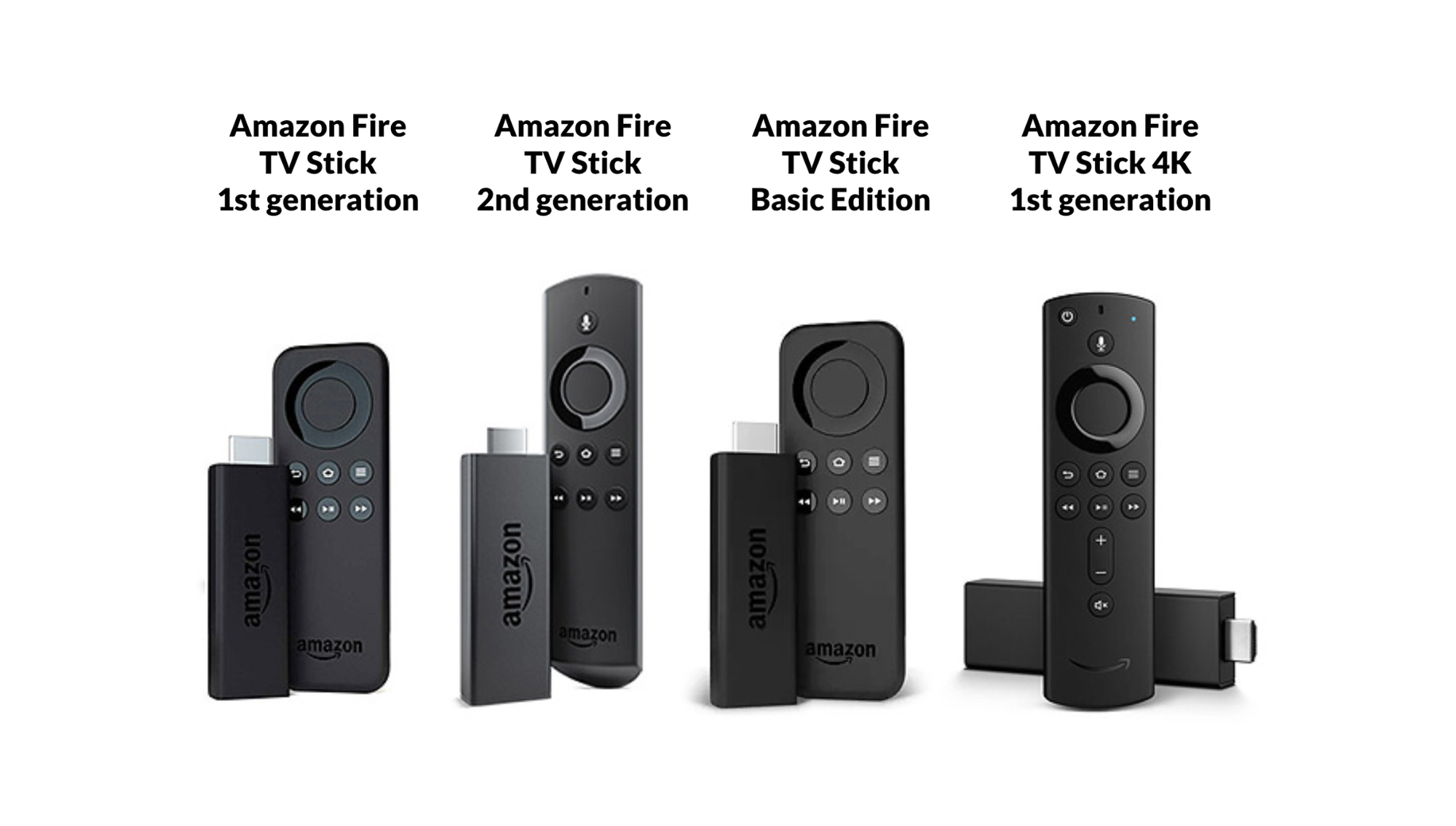
Most Fire Sticks look pretty similar at first glance: shiny black exteriors, a set of buttons, and a USB dongle that plugs into your TV.
But you can easily distinguish between multiple Fire TV devices by looking at the size of the device and the remote control in question.
Let’s break it down in the sections below.
👀 Pssst: don’t have time to look through every paragraph for answers? Here’s a quick flowchart to help you make a decision:
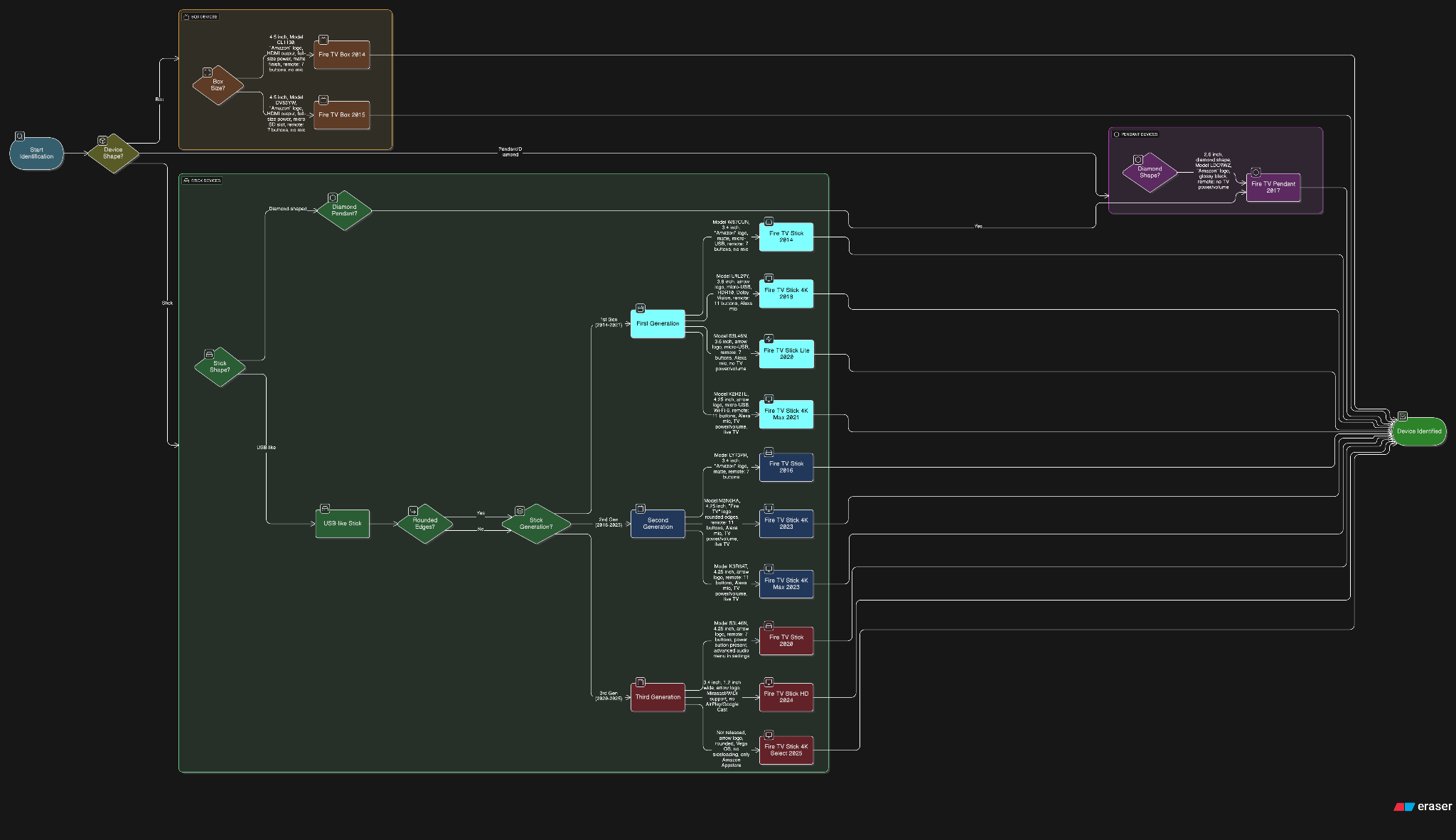
Fire TV Stick 1st generation
There are a few different models that fall into this category, as we explain below.
💡 Pro Tip: Older, discontinued models are easy to tell apart by their remote controllers. You’ll notice there’s no blue Alexa button or online streaming service buttons (think Netflix or HBO Max).
Fire TV box (2014)
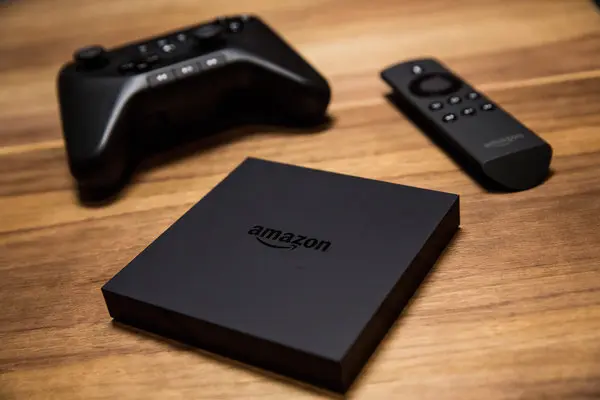
- Model number: CL1130
- Size: 4.5 inch box
- Logo on device: “Amazon”
This is the OG Fire TV device: a small, square box roughly 4.5 inches wide with sharp corners and a matte finish. You’ll find the Amazon logo embossed on top, an HDMI output on the back (not built-in), and a full-size power cable rather than a micro-USB.
The remote is simple and black with seven buttons and no microphone, so no Alexa support here. You can usually find the serial number printed on the underside of the box near the HDMI port.
Fire TV Stick (2014)
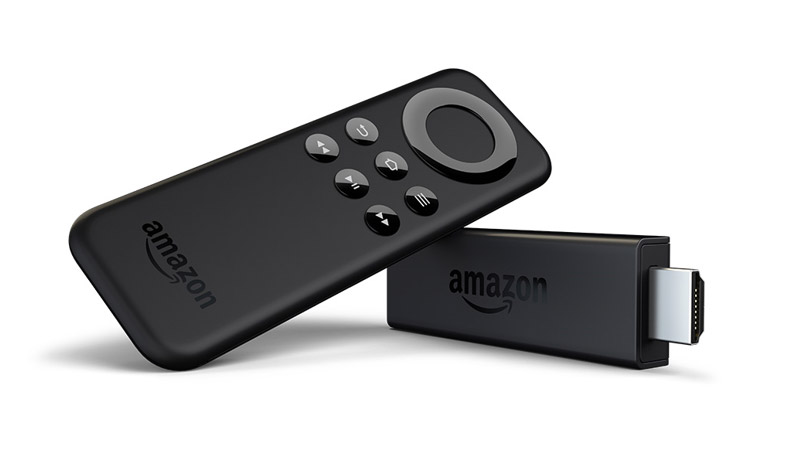
- Model number: W87CUN
- Size: USB-like stick, 3.4 inches long
- Logo on device: “Amazon”
This was the first-ever Fire TV Stick. As you can see, it’s a small, rectangular dongle that plugs directly into an HDMI port. It’s slim, black, and lightweight with a matte finish. Power comes from a micro-USB port on the side, which connects to a wall adapter.
The remote is slightly curved, black, and has seven buttons. There’s no microphone or Alexa support on this model. You can usually find the serial number printed on the back of the stick near the micro-USB port.
Fire TV Stick 4K (2018)
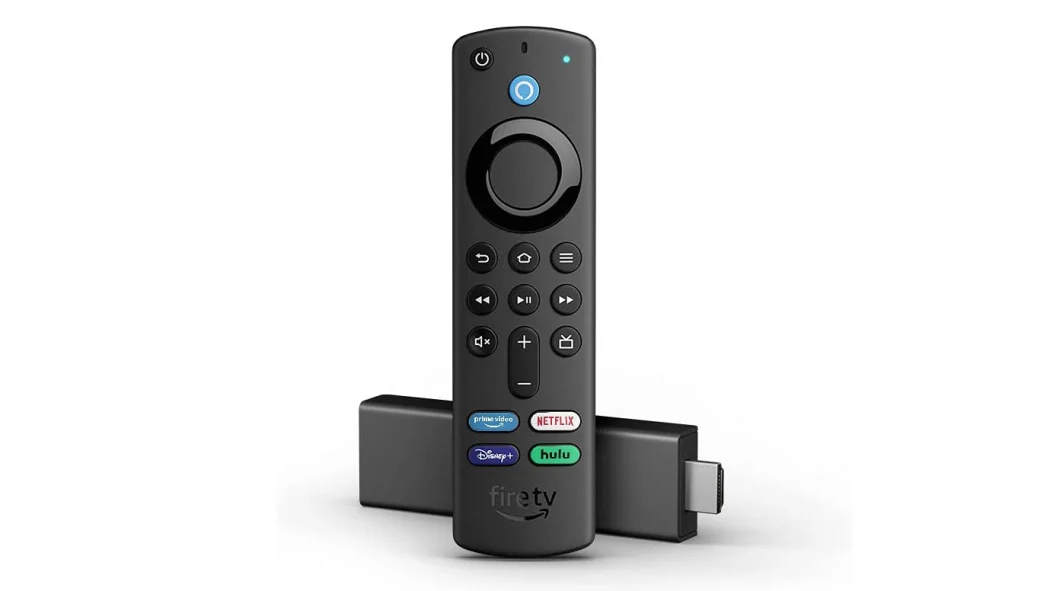
- Model number: E9L29Y
- Size: USB-like stick, 3.8 inches long
- Logo on device: Arrow
Another first: the first 4K-capable Fire TV Stick. It’s another slim, black dongle with a matte finish that plugs directly into an HDMI port. It’s powered via a micro-USB port on the side. Compared to the original Stick, the 4K supports HDR10, HDR10+, and Dolby Vision.
The remote is black and slightly curved, with 11 buttons including a microphone for Alexa voice control. As always, serial numbers are printed on the back of the stick near the micro port.
Fire TV Stick Lite (1st gen, 2020)
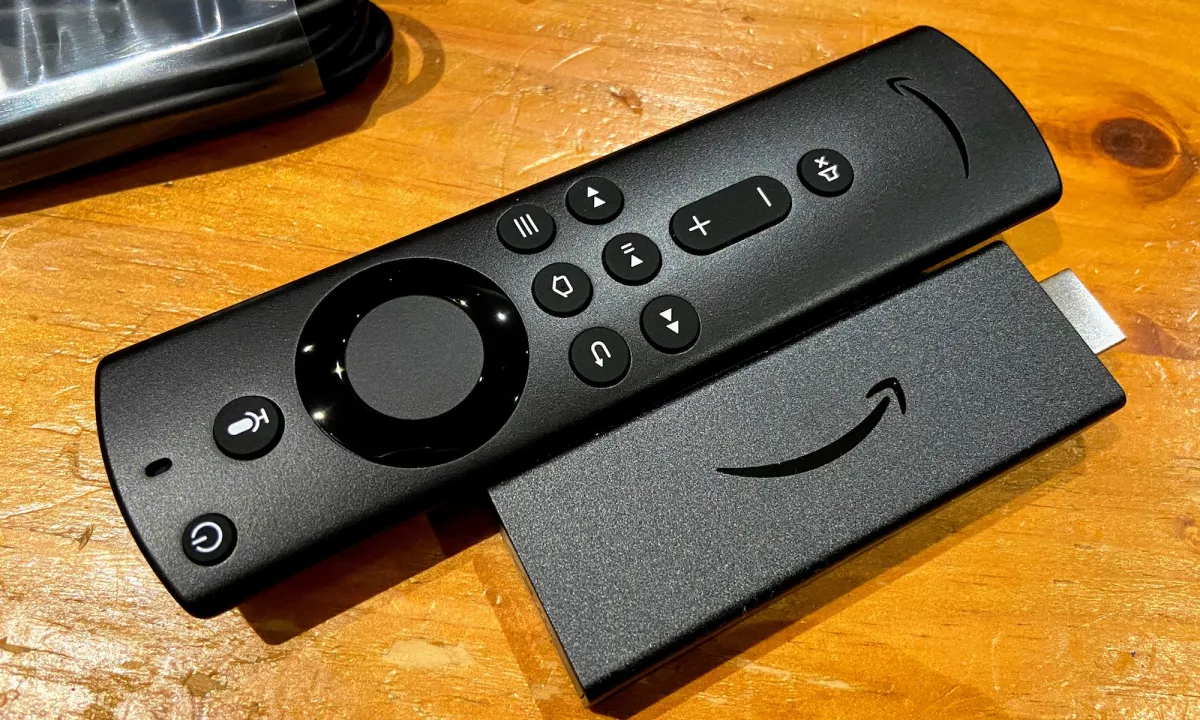
Model number: S3L46N Size: 3.6 inches long, USB-like stickLogo on device: Arrow
This is a compact, lightweight dongle with a matte black finish. Like all the other devices, it plugs directly into your TV’s HDMI port. Power comes from a micro-USB port connected to a wall adapter.
The remote is small, black, and simple, with seven buttons including an Alexa microphone button. Unlike the standard Stick, it does not have TV power or volume buttons. The iconic Amazon logo is printed on the dongle.
Fire TV Stick 4K Max (2021)
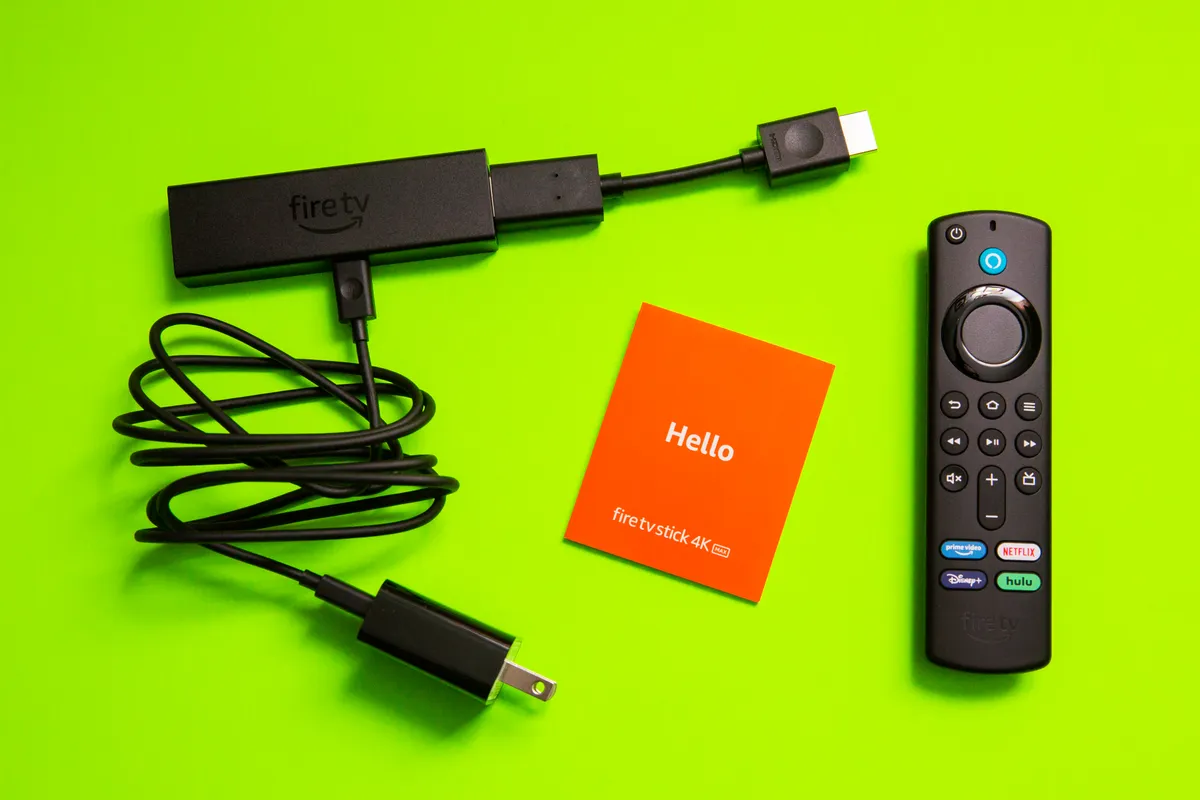
- Model number: K2R2TESize: 4.25 inches long (for dongle)Logo on device: Arrow
This is the upgraded 4K Stick with faster performance and Wi-Fi 6 support. The remote is slightly curved, black, and includes 11 buttons with an Alexa microphone button.
Unlike the Lite version, it also has TV power and volume buttons. There’s also a live TV button if you own a cable package and want to watch television in real time.
Fire TV Stick 2nd generation
Second-generation Fire TV devices include:
Fire TV (box) (2015)
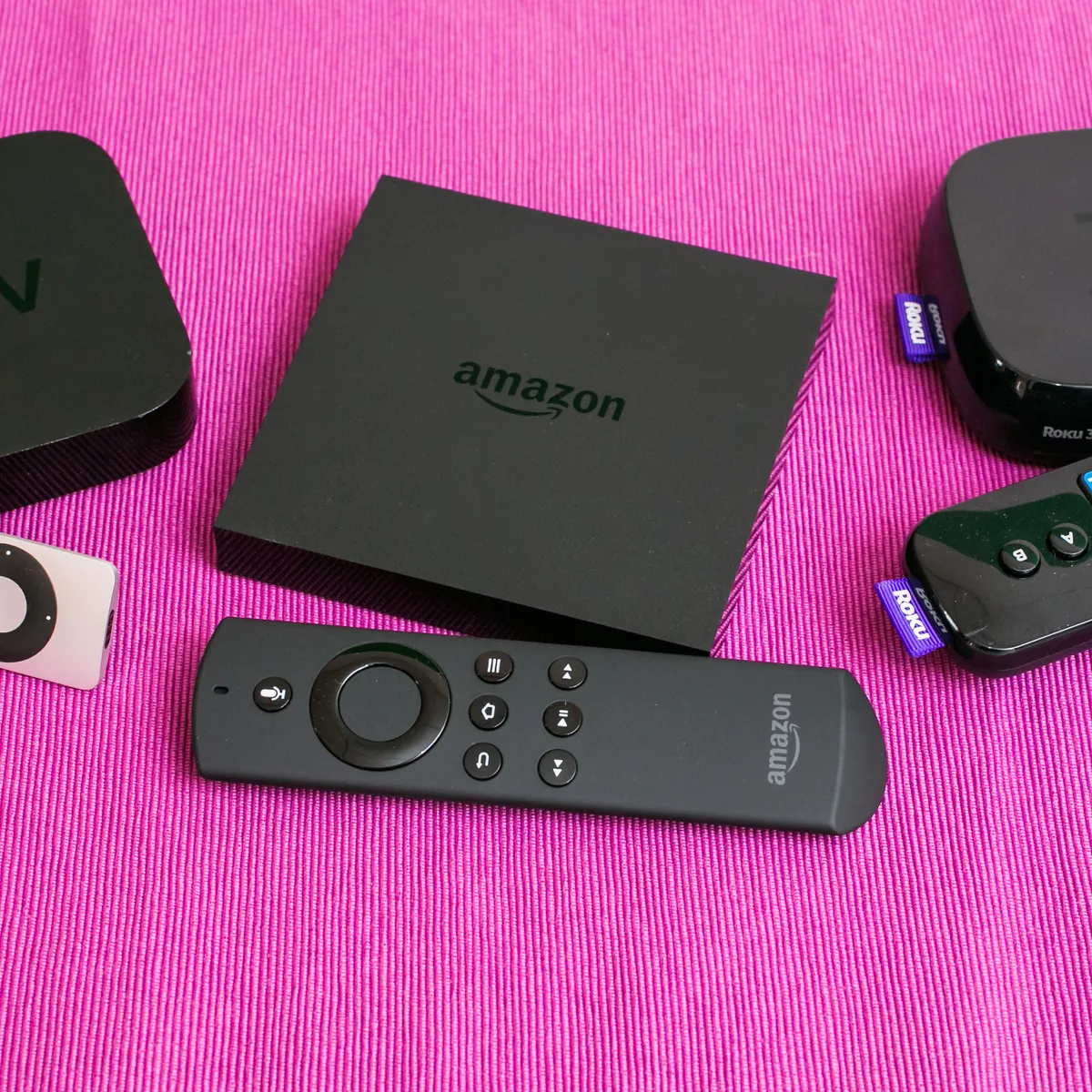
- Model number: DV83YW
- Size: 4.5-inch box
- Logo on device: “Amazon”
This is the second-generation Fire TV box, slightly slimmer than the original 2014 model but still square and matte black. It features an HDMI output on the back and a full-size power cable.
The remote is black, simple, and has seven buttons (excluding the wheel). The second port from the right should be a micro SD card slot.
Fire TV Stick (2016)
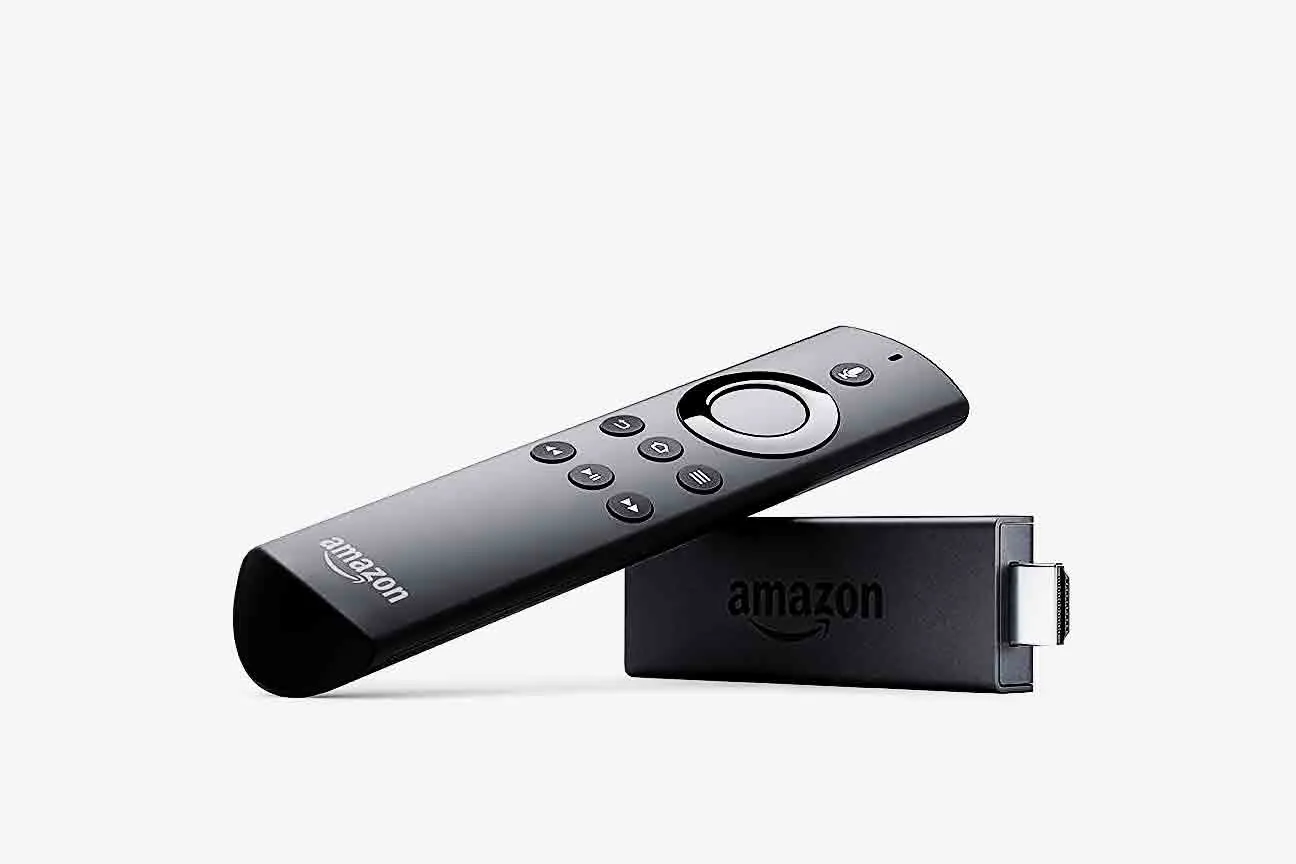
- Model number: LY73PR
- Size: 3.4 inches long
- Logo on device: “Amazon”
This is the second-generation Fire TV Stick with a matte black finish and slim rectangular design. It’s almost completely identical to the 2nd-Gen stick released outside the US. However, you can check by measuring the longest side (including the metal conductor) to ensure it’s 3.75 inches.
The remote is slightly curved, black, and has seven buttons. You can check for the LY73PR model number around the back of the dongle.
Fire TV Stick 4K (2023)
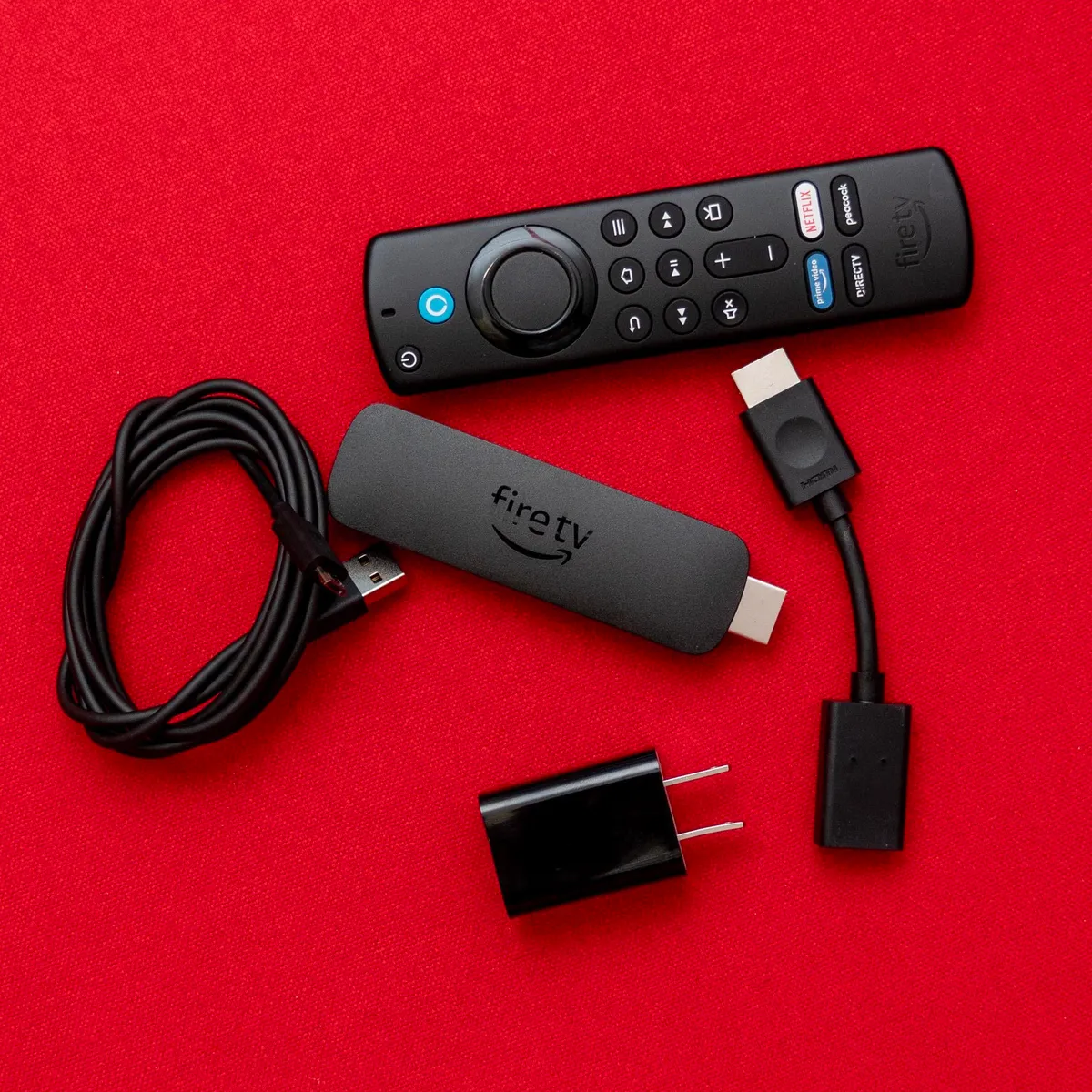
- Model number: M3N6RA
- Size: 4.25 inches long
- Logo on device: “Fire TV”
The rounded edges of this device are a pretty good giveaway that it’s a second-generation model. However, this updated 4K Stick is almost completely identical to the 2nd-gen Fire TV Stick 4K Max.
The only way to tell is to find the model number on the backside of the Fire TV dongle. Again, the number should be M3N6RA for this device. K3R6AT is the 4K Max, as you’ll see below.
Fire TV Stick 4K Max (2023)
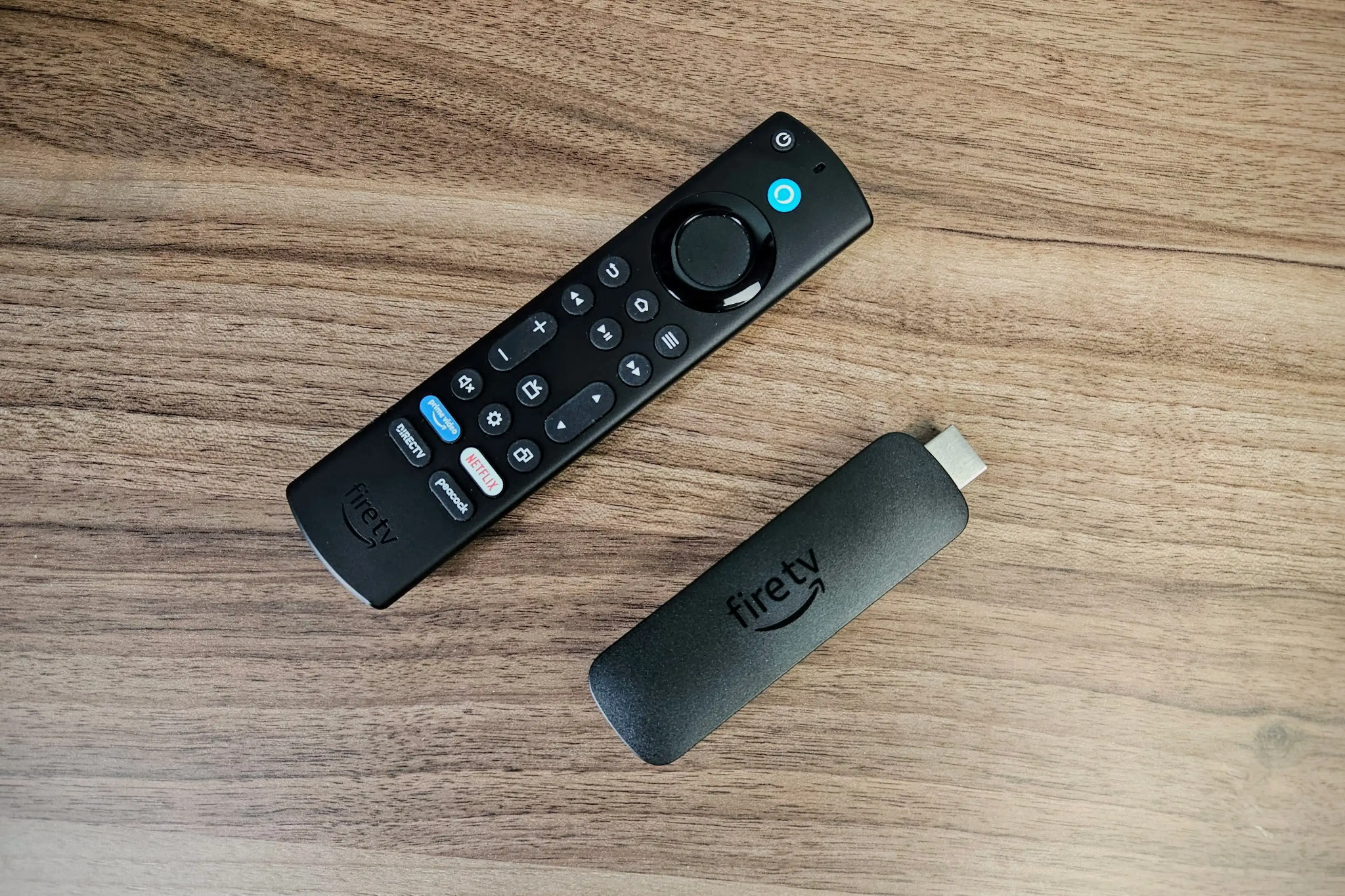
- Model number: K2R2TE
- Size: 4.25 inches long (dongle)
- Logo on device: Arrow
This is the latest 4K Max, offering faster performance, Wi-Fi 6E, and HDR support. The remote is black, slightly curved, with buttons featuring Alexa voice, TV power, volume, and a live TV button for cable packages.
FYI: the first-generation Fire TV Stick 4K Max and the second-generation are physically the same size. But the regular 4K’s logo is just the Amazon arrow. The 4K Max has a “Fire TV” logo.
Fire TV Stick 3rd generation
Newer Fire TV interfaces are easy to distinguish from their older peers.
Here are some handy rules of thumb to help you tell the difference between models:
Fire TV (pendant) (2017)
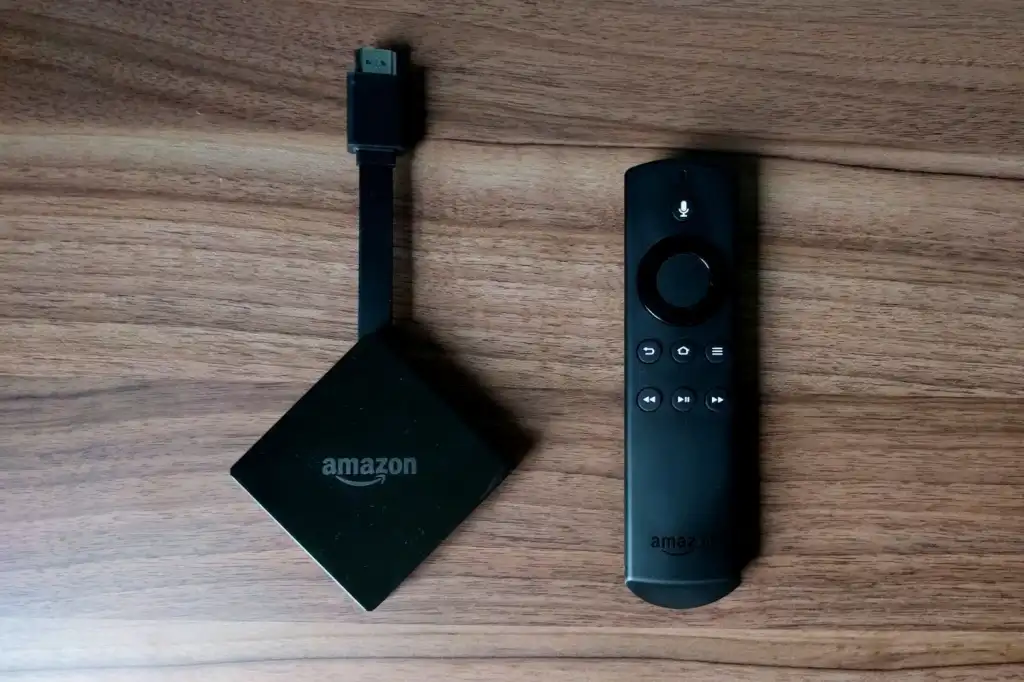
- Model number: LDC9WZ
- Size: 2.6 inches long, diamond-shaped dongle
- Logo on device: “Amazon”
This Fire TV design took a different approach with a pendant-like, rounded design that hangs slightly off the HDMI port instead of a flat stick. Its glossy black finish and curved edges make it stand out from earlier rectangular Sticks.
Unlike the 4K models, this device does not have TV power or volume buttons. Just look for the “Model No. LDC9WZ” printed on the back.
Fire TV Stick (2020)
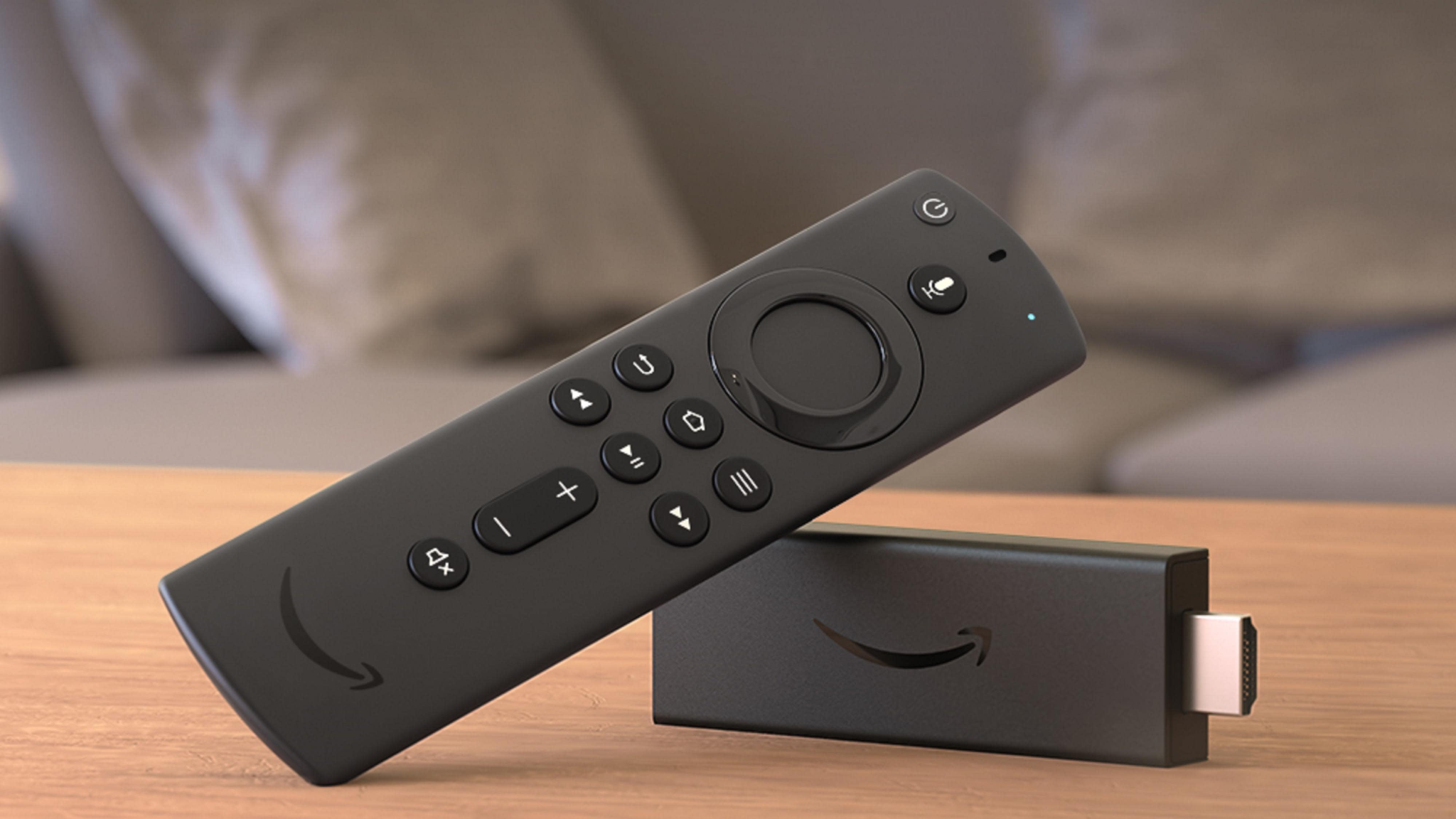
- Model number: S3L46N
- Size: 4.25 inches long
- Logo on device: Arrow
Notice the similar serial number? That’s because the first-generation Fire TV Stick Lite and 3rd-gen Fire TV Stick are pretty much indistinguishable. Yes, even the remotes are interchangeable.
To tell them apart, try:
- Checking settings. The third-gen Fire TV Stick has an “Advanced Audio” menu. The first-gen Fire TV Stick Lite does not.
- Look at the remote. A remote with a power button is a third-generation Fire TV Stick. The Lite doesn’t have this.
Fire TV Stick HD (2024)
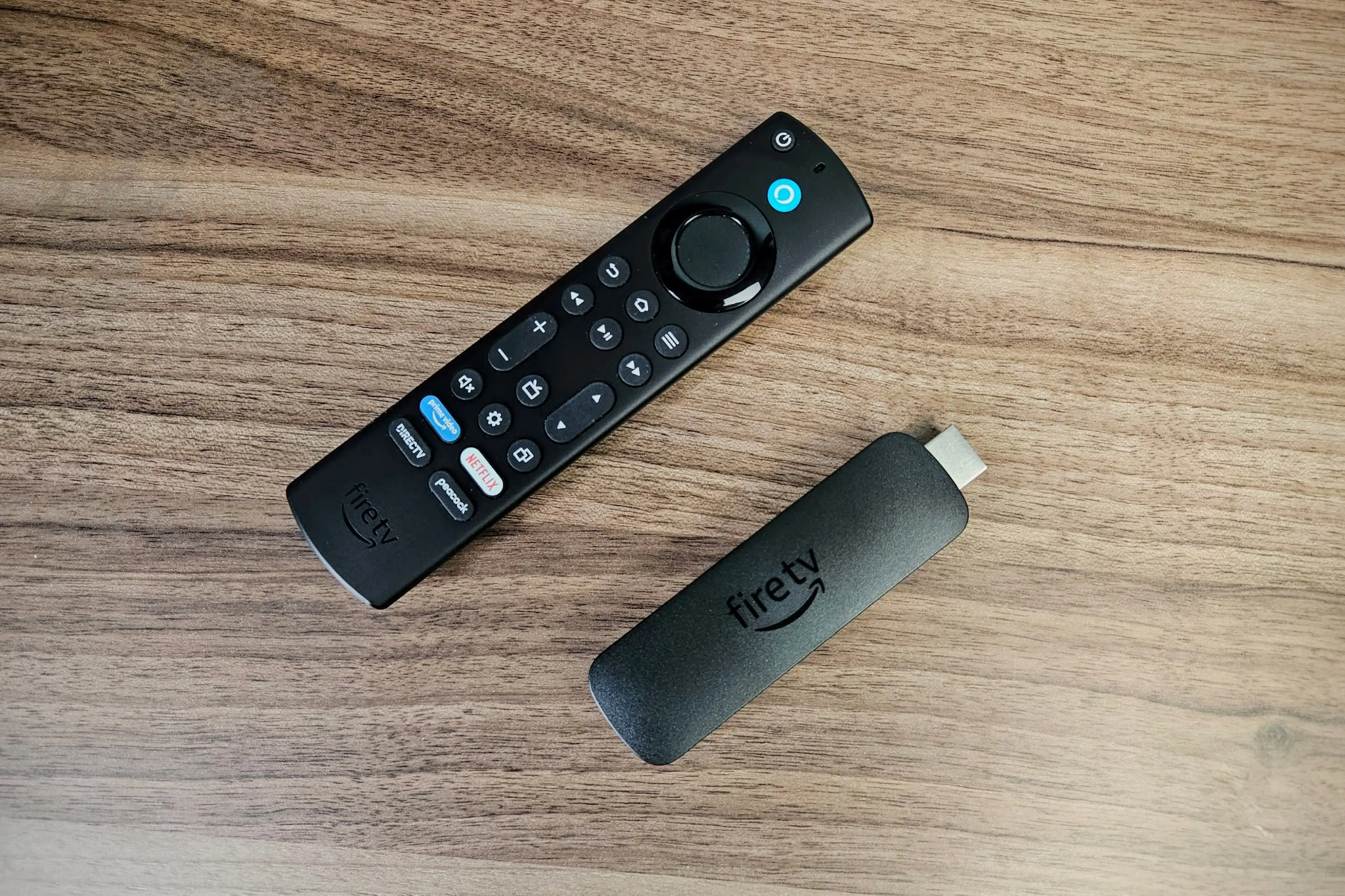
- Model number: n/a
- Size: 3.4 inches long, 1.2 inches wide
- Logo on device: Arrow
The Fire TV Stick HD keeps the same compact look as the Fire TV Stick Lite. It’s a slim black dongle with an HDMI plug on one end and a micro-USB port on the side for power, using the included cable and wall adapter.
The HD device can also mirror a Windows PC using Miracast/WiDi. Just keep in mind it doesn’t support Apple AirPlay or Google Cast for streaming from phones or tablets. If you want those features, other devices are better suited.
We’ll chat about those later on in the guide.
Fire TV Stick 4K Select (2025)
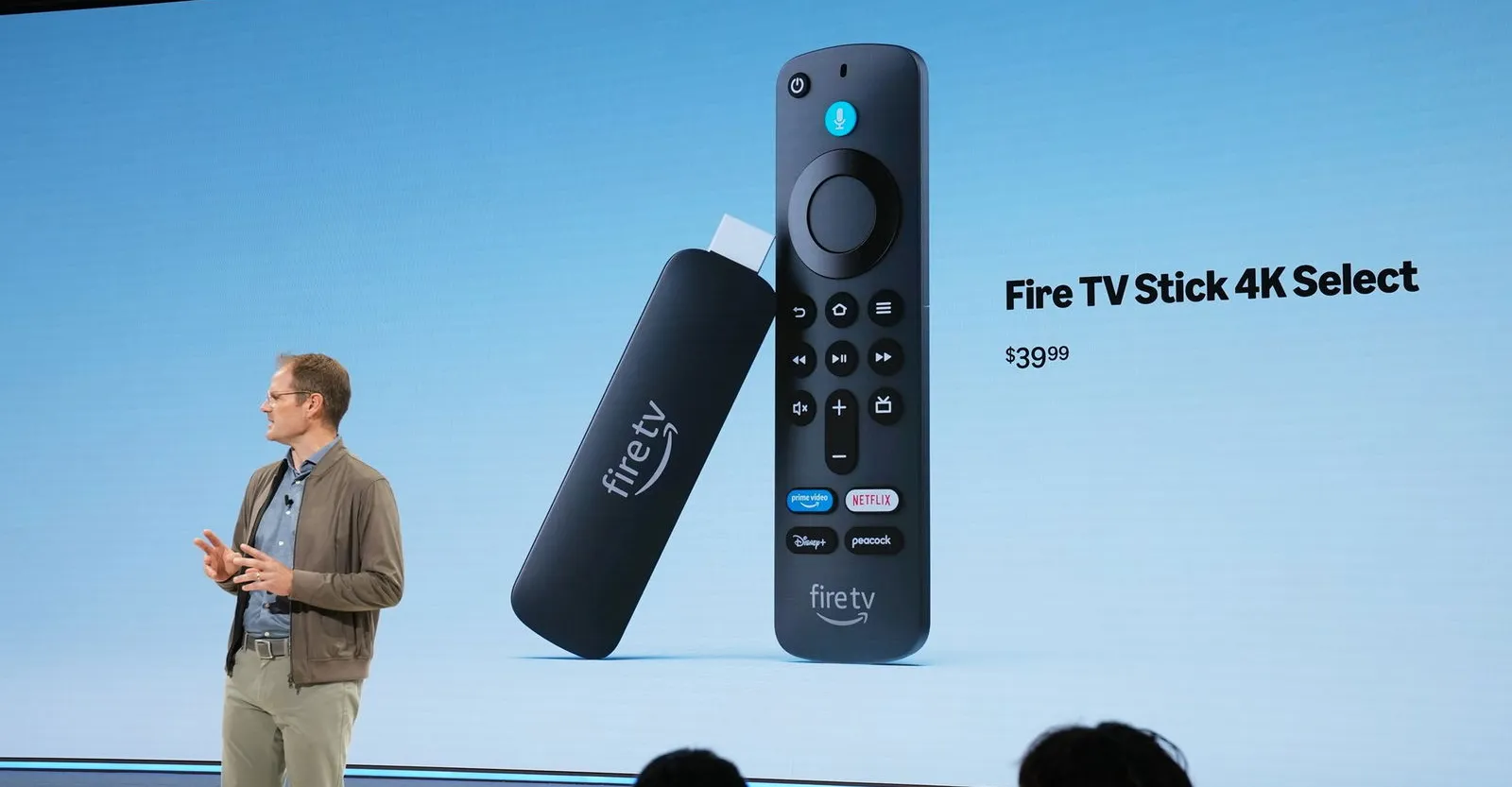
- Model number: Not released
- Size: Not released
- Logo on device: Arrow
The Fire TV Stick 4K Select is Amazon’s newest streamer and set to be released on October 15, 2025. It features a sleek, rounded design and plugs directly into your TV’s HDMI port. That means it can draw power via a micro-USB cable and wall adapter.
This model runs Amazon’s brand-new Vega OS, which replaces Android. It also doesn't support sideloading, meaning you can only install apps available in the Amazon Appstore. That’s something to keep in mind if you want to run digital signage software or other apps outside of Amazon’s ecosystem (like Fugo).
Bonus: Fire TV cubes
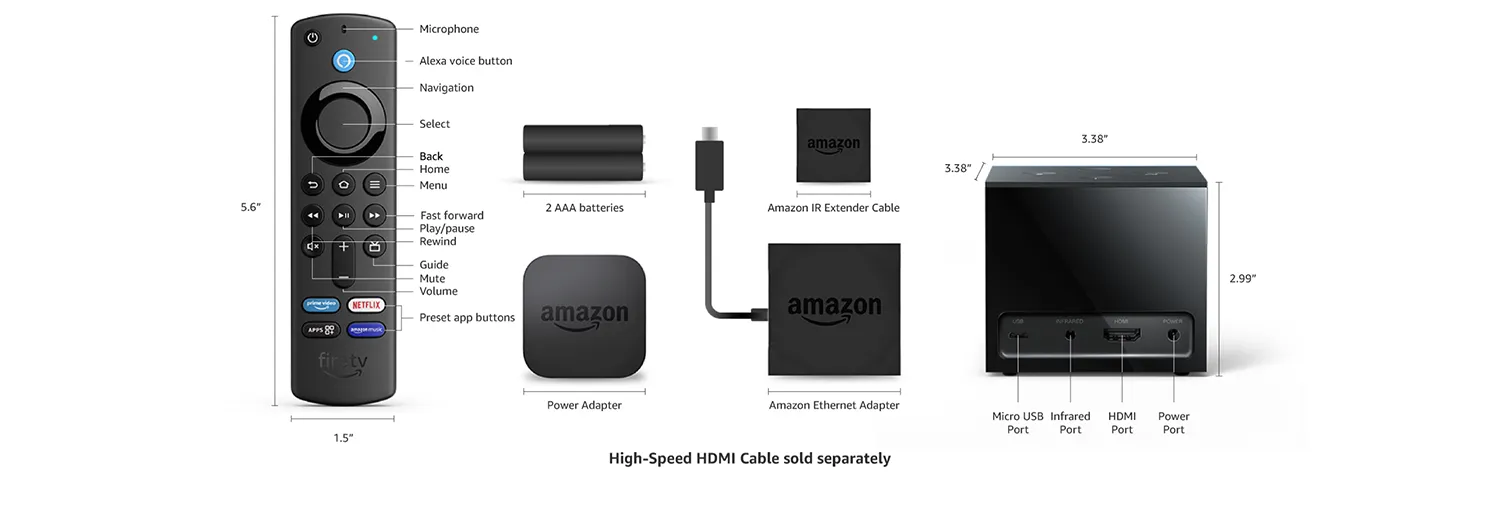
Fire TV cubes are almost impossible to miss — they’re literal 3.5-inch cubes that hang out next to your TV. There are two kinds on the market: an Amazon Fire TV Cube second generation, and an Amazon Fire TV Cube third generation.
You can tell these apart by their external features:
- Gen 2 is no longer on the market.
- Gen 2 had a glossy design. Gen 3 has a mesh-looking exterior.
- Gen 3 has six ports on the back, while Gen 2 only has four.
Keep in mind the Cube’s high-speed HDMI cable is typically sold separately, so it’s not always a differentiator between generations.
As for internal differences, the third-gen Fire TV Cube supports Wi-Fi 6E. It also comes with an octa-core processor that speeds up performance.
But again, the biggest difference will probably be price. Gen 3 starts at ~$99 on Amazon, while Gen 2 is mostly relegated to eBay these days.
Here’s a quick visual guide to help you distinguish between the two:
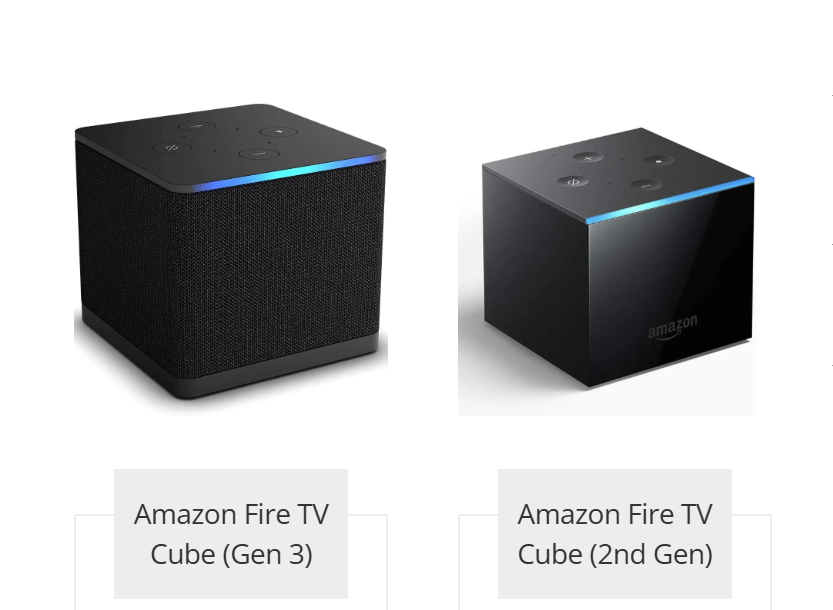
Fire Stick model alternatives
Maybe you don’t have the right model for your use case, or maybe you’re looking to upgrade your hardware.
Either way, you know you need a Fire Stick alternative.
So here’s a quick rundown of your options:
- Google TV Streamer: Google’s official Chromecast replacement. It boasts 32 GB of internal storage (a big jump from the Fire Stick 4K Max’s 8 GB), plus runs Google TV natively, supports 4K HDR, and integrates with Google Assistant for voice control and smart home setups.
- Chromecast: The original streaming classic. It’s simple and affordable, especially for screen mirroring or casting dashboards directly from a computer or phone. That said, it doesn’t have built-in apps or a remote, so it’s better for secondary displays or quick presentations than long-term signage use.
- Chromecast with Google TV: Google’s first stab at combining Chromecast with a full TV interface. It’s still compatible with all major streaming platforms. But since Google TV Streamer is slowly taking over, this model will likely be phased out in the near future — so it’s best for short-term or budget-friendly setups.
- Raspberry Pi 5: For the tinkerers out there, Raspberry Pi 5 is a DIY powerhouse. You can load custom signage players, build dashboards, or even run lightweight digital signage software. It’s not plug-and-play like a Fire Stick, but it gives you total control over performance, operating systems, and integrations. Perfect for more technical users who want freedom over convenience.
- Android TV: Android TV devices come in all shapes and sizes and are a solid choice for signage setups that need flexibility. You’ll typically get Google Play access, support for custom apps, and a familiar Android interface that’s great for streaming or managing digital signage playlists.
- *Roku: Roku’s ecosystem is as easy as it gets, which makes it a great option for microbusinesses that want stable streaming without extra setup. It supports all major streaming apps, has intuitive navigation, and offers models ranging from HD to 4K. It’s not as customizable as Android-based players, but it’s rock-solid for plug-and-play signage or streaming.
*Roku is not compatible with Fugo's digital signage software.
How do you connect an Amazon Fire TV Stick to Fugo?
Great question! And while it’s not our first choice, Fugo does support modern Fire TV Stick devices.
You’re welcome to check out our guide explaining how to use the Amazon Fire TV Stick for digital signage.
Then, explore ways to use it for use cases like advertising new products, displaying posts on social media, showing off digital menu boards, sharing business dashboards, and standing out in your industry.
Frequently asked questions about comparing Fire Stick models
Q: Which Amazon Fire Sticks work with Fugo?
Amazon Fire TV Sticks can and do run Fugo. But we no longer recommend them for new purchases.
Don’t panic — we’ve continued to maintain and improve our Fire Stick support. But for a better experience (i.e., more reliable performance for digital signage), we recommend an alternative like the Google TV Streamer.
For more details on Fire TV limitations and a list of supported/unsupported hardware, check out the Amazon Fire TV Hardware Directory here.
Q: Which version of Fire Stick is the best?
The “best” Amazon Fire TV devices will depend on your specific needs.
For example, here’s a quick look at the top Fire TV Stick models and their best use cases:
- Fire TV Cube (3rd Generation): Best for wired internet connections
- Fire TV Stick Lite: Best for compact setups in awkward spaces
- Fire TV Stick 4K: Best and most popular Fire TV Stick model
Q: What is the latest model of Fire Stick?
The most recent Fire Stick model is the Fire TV Stick 4K Select, which has a release date of October 15, 2025. Amazon announced it plans to run on the Vega OS, which is a brand-new operating system designed to replace Android. Just keep in mind it doesn’t come with sideloading — which means you can’t install apps on your Fire Stick outside the official Amazon Appstore. This could be a problem for running digital signage software, including platforms like Fugo.
